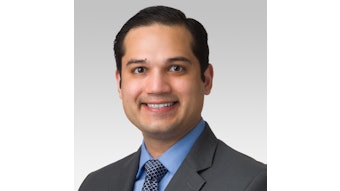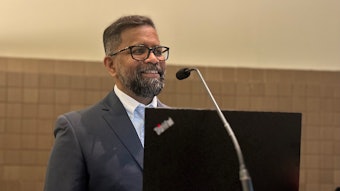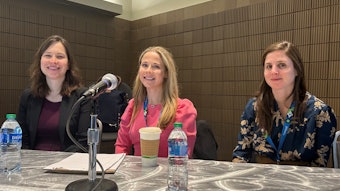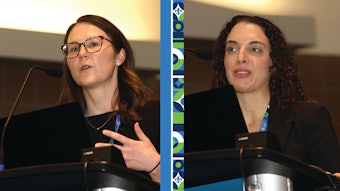A question of belonging
Kenney Lecture focuses on improving diversity in dermatology.
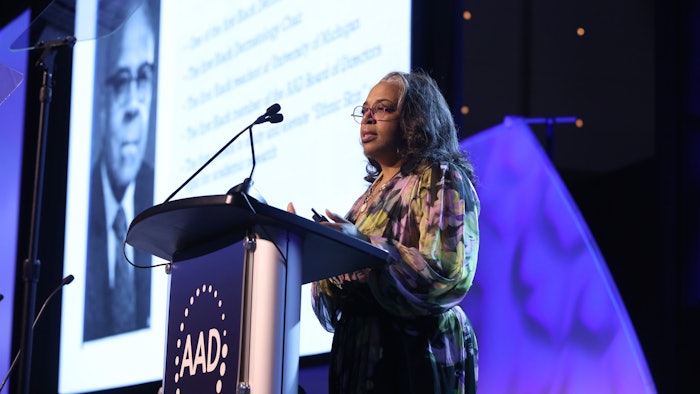
Dermatology has been squaring up against a dilemma. If fewer medical students of color, particularly Black males, are choosing to enter the specialty, the result is a shrinking and older workforce with fewer dermatologists of color. Too many medical students are questioning whether they belong in dermatology, and often going elsewhere to other specialties.
New approaches to help bring more younger physicians and physicians of color into dermatology were presented by Amy McMichael, MD, FAAD, professor of dermatology at Wake Forest School of Medicine in Winston-Salem, North Carolina, during her presentation, John Kenney Jr., MD, Lifetime Achievement Award and Lectureship, “Belonging: You Have a Place in Dermatology.”
Honoring Dr. Kenney’s trail-blazing legacy
“Belonging in dermatology, or not belonging, goes all the way back to John Kenney Jr., MD, the first African American chair of dermatology, the first African American member of the AAD, and one of the first African American dermatologists,” said Dr. McMichael. “He not only created a space for himself in dermatology. He created space for others by becoming chair at Howard University School of Medicine, becoming the leading specialist in dermatologic conditions affecting African Americans, and showing people of color that they do, indeed, belong in dermatology. It is time to remind medical students, college students, high school students, and younger that they belong, not just in medicine, but in dermatology.”
Displaying a new culture
Physicians of color clearly do not see representation of the diversity of race in dermatology. Dr. McMichael noted that dermatology has the second-worst record of non-Caucasian practitioners among all specialties, exceeded only by orthopedic surgeons.
“We need to weave a culture of belonging,” Dr. McMichael said. “It is not just telling physicians of color and younger physicians they belong in dermatology, it is showing them how they belong and how dermatology can help them achieve their own goals. People don’t know what dermatology and the AAD can offer them; they don’t even know who we are. It is too easy to confuse AAD with the ABD (the American Board of Dermatology) and the APD (the Association of Professors of Dermatology).”
How can we help?
Potential dermatologists also need a reason to join the specialty. It is not what they can do for dermatology or for the AAD, Dr. McMichael explained. The key question is what dermatology and the AAD can do to help them meet their goals in medicine and in life.
“If you want people to feel they belong, you have to share information in ways they want to hear,” she said. “You have to share information they want to know. You do both by asking them what they care about and showing them what you have to offer. It’s not about ‘we’re a great specialty, a great organization.’ Belonging is all about ‘here’s how we can help you, what we can do for you and with you.’ If someone wants to go into surgery, for example, show them the types of surgery they can perform in only dermatology — the surgical challenges and opportunities unique to our specialty. Everything else dermatology can come later.”
Instill excitement early in life
The challenge of attracting new dermatologists and dermatologists with skin of color doesn’t start in medical school, Dr. McMichael added. A sense of belonging starts in college, in high school, in middle school, with role models who can show the possibilities and display the vast potential of STEM (science, technology, engineering, and mathematics) education. Dr. Kenney knew he wanted to be a physician as a child, thanks in part to role models. His father, John A. Kenney Sr., MD, was chief surgeon at Tuskegee Institute, and the Institute’s founder, Booker T. Washington, was a familiar face.
“We have mentorships for our residents and medical school students, but as an organization, we have to go further back to the high schools and earlier,” Dr. McMichael said. “Some specialties have made that investment and are seeing the benefits. We have to reach out not just to our generational communities of color but also our immigrant communities of color and younger physicians and help them all feel the excitement of dermatology. We can make the AAD the umbrella organization for all dermatologists no matter what their needs are. That makes us all stronger because we speak with one voice in the house of medicine. Dr. Kenney gave us the template for how to achieve just that.”
AAD and Pathways
Last year, the American Academy of Dermatology, in collaboration with Johnson & Johnson Consumer Health and Janssen, launched Pathways: Inclusivity in Dermatology to increase the number of practicing dermatologists who are underrepresented minorities in medicine (URiM). The program is working to increase the number of dermatologists from URiM communities by engaging students from Black, Latino, and Indigenous communities. Programming from high school age through medical school can build the skills, knowledge, and interest to pursue a career in dermatology through scholarship offerings, skills workshops, mentorship programs, and leadership training. Learn more about Pathways.
Visit AAD DermWorld Meeting News Central for more articles.


